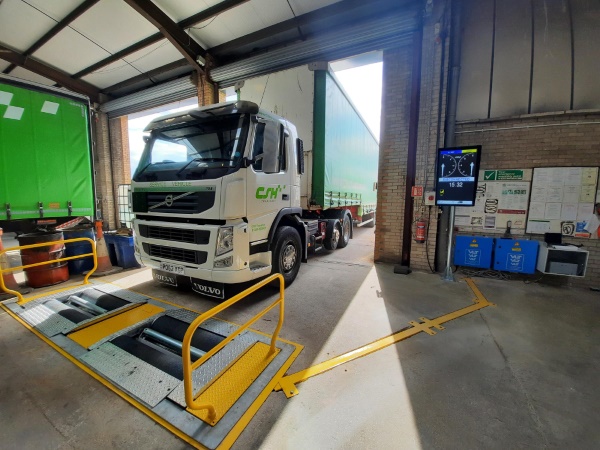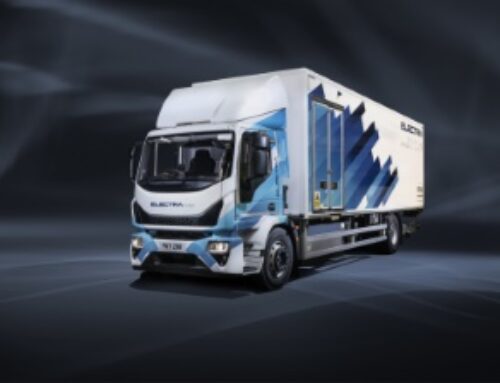Roller brake test tips from VLT
 Workshop equipment provider VL Test Systems (VLT) has described how roller brake test results can provide fleets with valuable diagnostic clues on the state of a vehicle’s braking components.
Workshop equipment provider VL Test Systems (VLT) has described how roller brake test results can provide fleets with valuable diagnostic clues on the state of a vehicle’s braking components.
“Regular brake testing is a very important tool to demonstrate an operator is doing his best to comply with DVSA requirements in maintaining the roadworthiness of the vehicles in the fleet,” said Chris Manby, UK sales manager at VLT.
“However, once you have invested in a roller brake tester, making greater use of it in the workshops can also highlight some potential problems and allow you to rectify them.
“It makes sense to invest in a brake tester with the DVSA-approved software, so the test is the same as if the vehicle was undergoing its annual test.”
The VLT16733 HGV brake tester, for example, evaluates the vehicle brake performance and calculates the pass/fail criteria according to the latest DVSA regulations, says Chris.
One of the metrics assessed during a brake test is bind, a measurement of rolling resistance or drag.
“On the test, the permitted amount of drag is four percent of the axle weight per wheel when the rollers are started,” Chris continued.
“However, if tested vehicles regularly fail the bind test by exceeding this figure, do investigate further. Too high a reading can mean faulty wheel bearings, too little tyre pressure and /or incorrectly adjusted brakes causing excessive wear of brake components.”
No matter what the reason for the high bind reading, says Chris, it will in any case cause excessive fuel consumption to overcome this artificial braking whilst driving, and additionally have an impact of the handling/steering of the vehicle.
Another aspect Chris highlights is ovality: on the annual test, brake ovality is measured mainly on the front steered axles, and indicates that although the brake pedal force is steady, the brake force at the wheel is not.
“If you measure it on all the axles as part of a routine inspection, it can help with preventative maintenance. because a fail on the ovality test can be an early warning sign that a component is failing,” Chris explained.
“A crack within the drum, for example, could show up as a poor result. The technician then has the opportunity to carry out further checks on the drum or disc. If it is indeed cracked, it can then be replaced before it starts to split and cause brake failure or damage to other components.”
Braking imbalance, meanwhile, is a test on the service brake, Chris continues – and to pass, the brake effort on each axle wheel must be no greater than 30 per cent difference between opposite wheels; the percentage imbalance is not considered, provided both wheels achieve locking on the same axle. Imbalance can be a particular problem on 13- and 15-seater minibuses.
“Although imbalance is a routine part of the annual brake test, it is usually done on one side of the axle,” said Chris.
“Checking the imbalance by running both wheels together will give a more realistic indication of the on-road performance of the brakes performance. You will get a visual indication of which wheel is the greatest amount out of balance on the display of all VLT16733 brake testers.”
 Another key topic to consider is load simulation.
Another key topic to consider is load simulation.
“If you test a vehicle unladen, and then again laden or partly laden, it will produce a different result. That, of course, is because the amount of braking effort required is greater the heavier the axle load.
“VL Test Systems recommend doing any brake test either with a laden vehicle of minimum 65 per cent design axle load for a meaningful test result and if that is not practicable, then our advice is to invest in a load simulator.”
VLT’s load simulator is electronically controlled by the brake tester program, and counteracts modulation and any kickback from the suspension system; furthermore, says the firm, with a constant 65 per cent DAW (design axle weight) from the VLT chassis load simulator, users can be assured of a meaningful brake test result.
“The VLT chassis load simulator is particularly efficient for testing semi-trailers to a laden condition instead of ULTAST (un-laden tri-axle semi-trailer), as the VLT chassis load simulation system is able to add sufficient load to the vehicle according to the DVSA requirements without damaging the axles or chassis,” Chris concluded.










